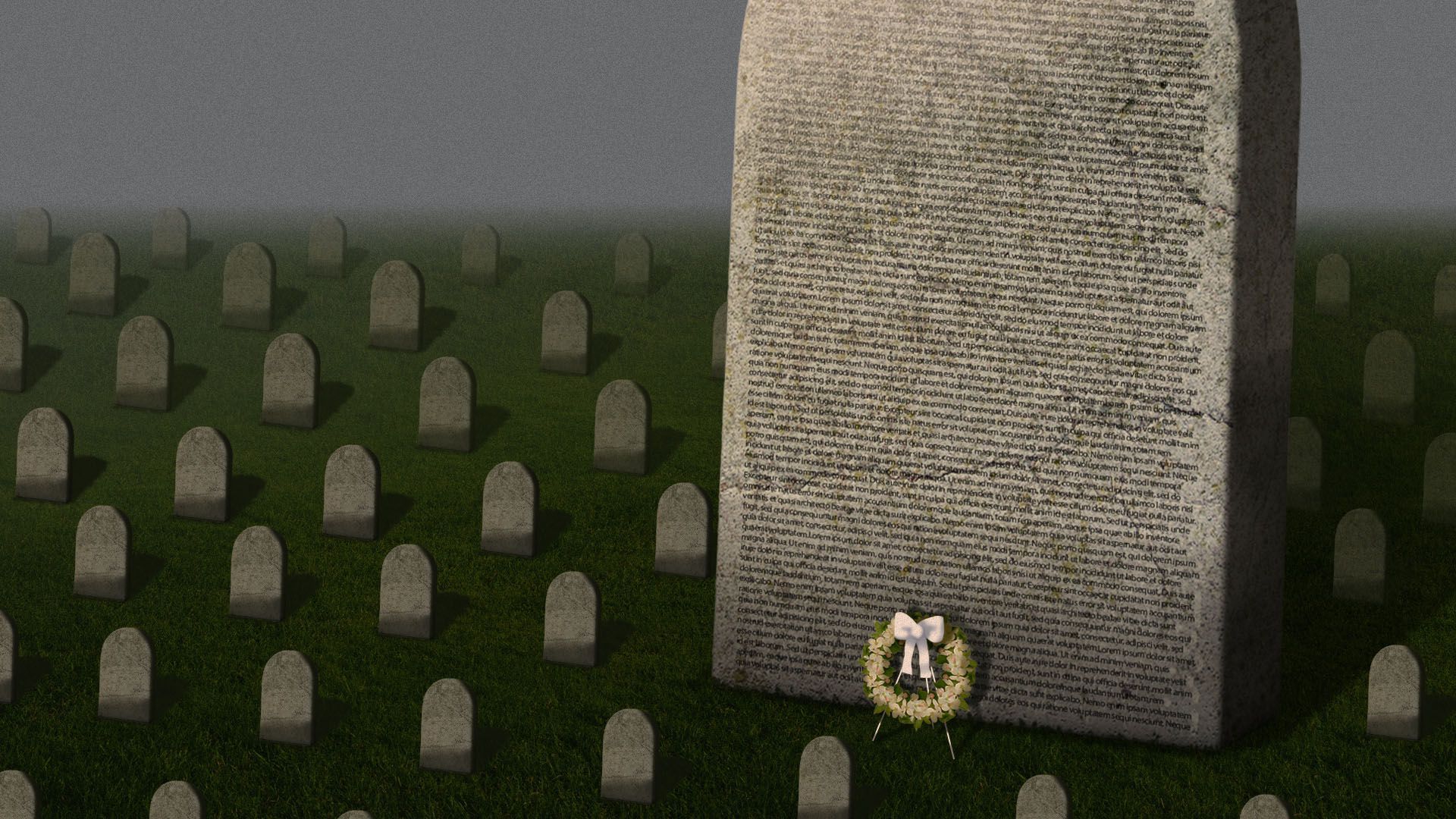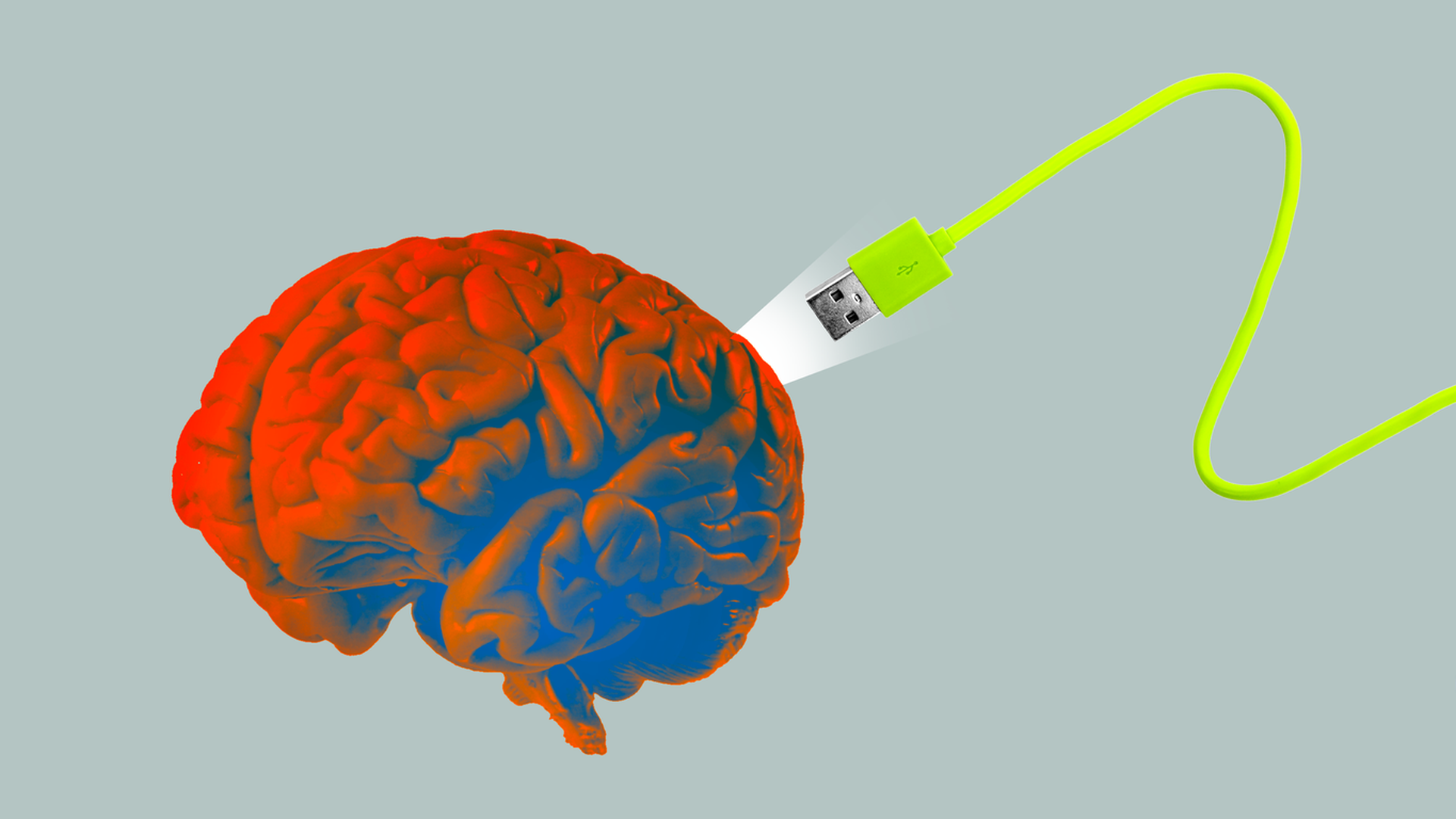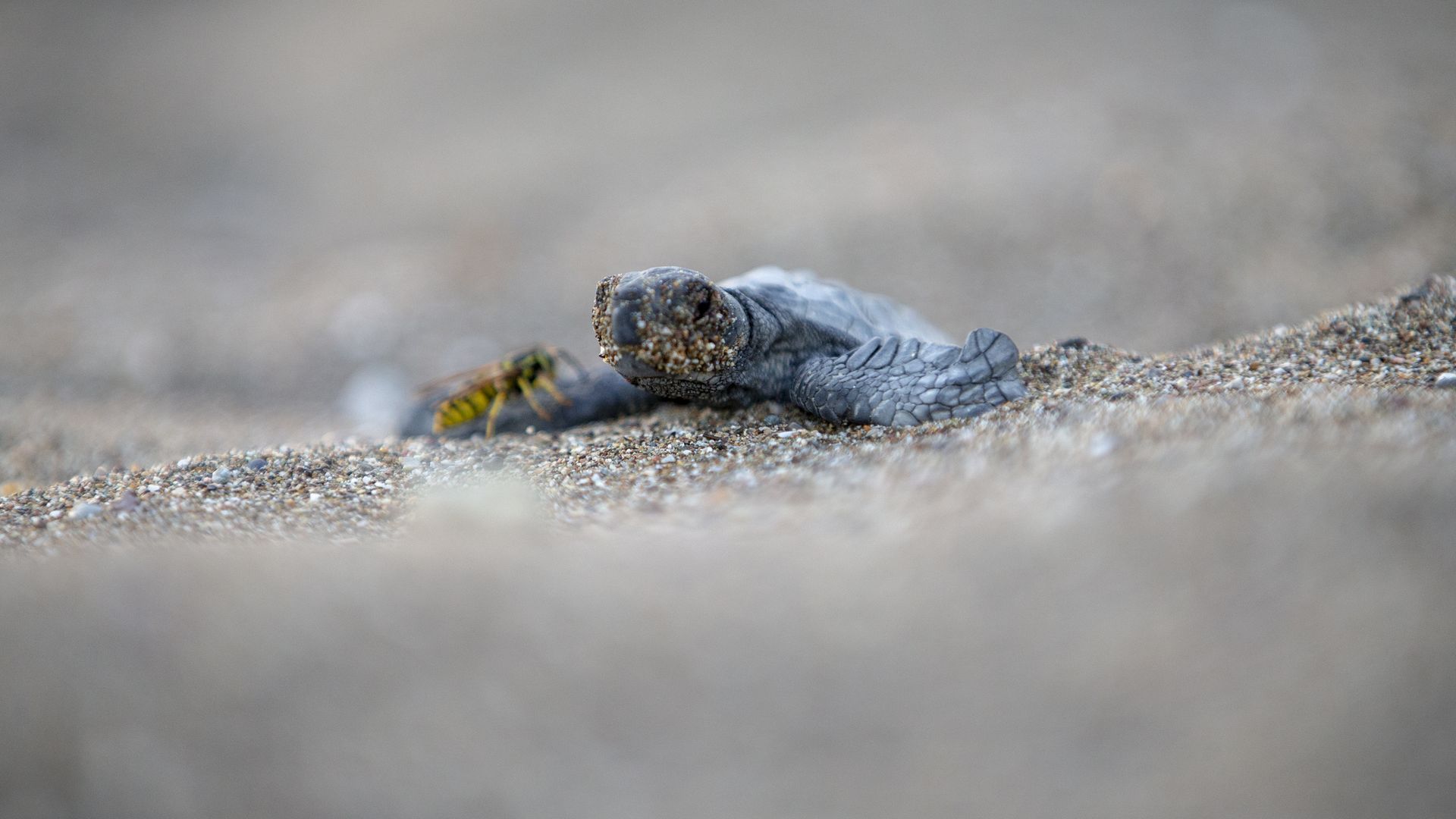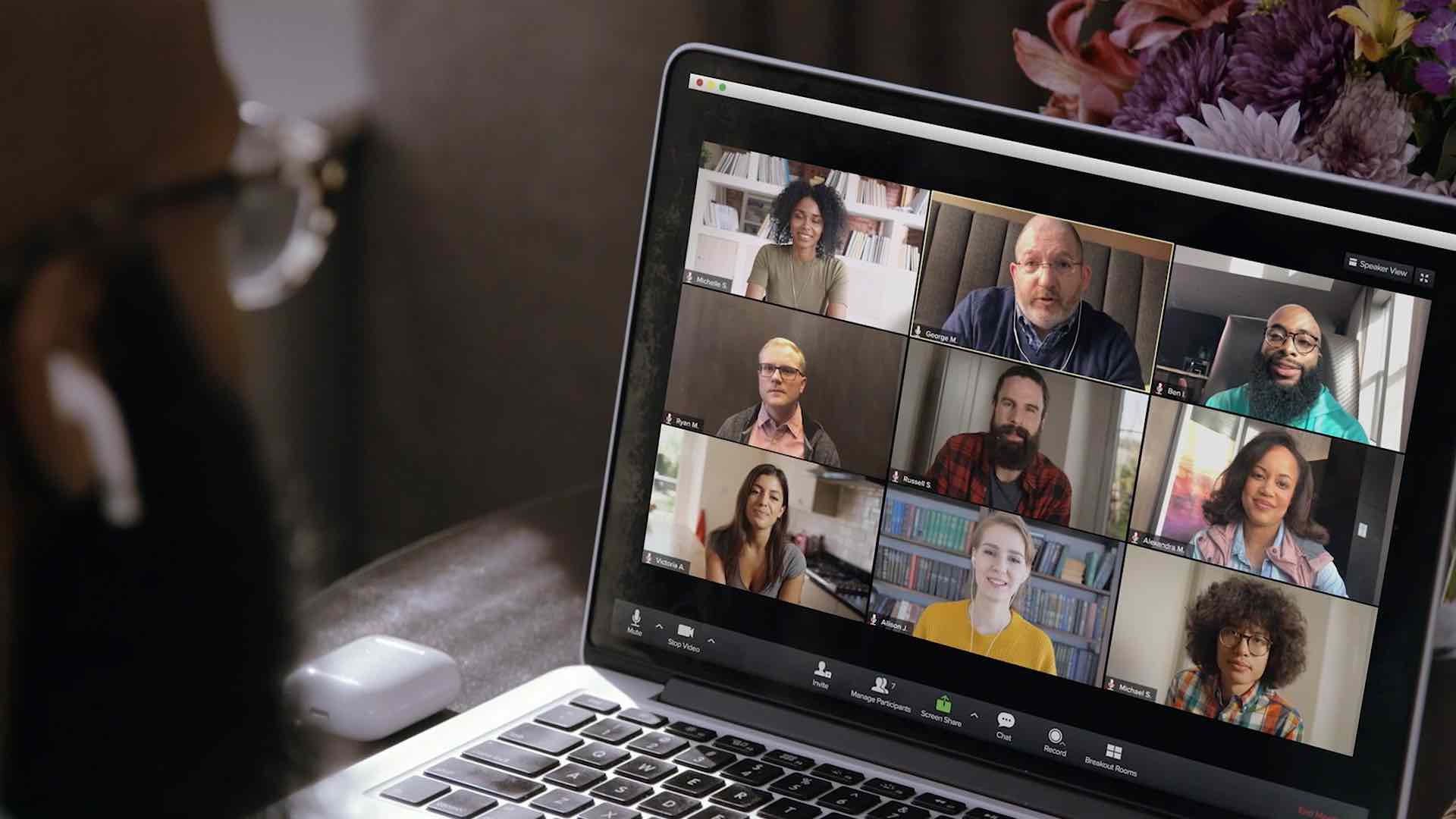| | | | | | | Presented By 2U | | | | Axios Future | | By Bryan Walsh ·Nov 21, 2020 | | Welcome to Axios Future, where we're pleased to learn that 17% of Americans say their stress levels have dropped since the election, which is approximately 17% more than we would have expected. Today's Smart Brevity count: 1,835 words or about 7 minutes. | | | | | | 1 big thing: Why we're numb to 250,000 coronavirus deaths |  | | | Illustration: Sarah Grillo/Axios | | | | The U.S. passed 250,000 confirmed deaths from COVID-19 this week, a figure that is truly vast — too vast, perhaps, for us to comprehend. Why it matters: The psychic numbing that sets in around mass death saps us of our empathy for victims and discourages us from making the sacrifices needed to control the pandemic, while it hampers our ability to prepare for other rare but potentially catastrophic risks down the road. By the numbers: The sheer scale of the U.S. death toll from COVID-19 can be felt in the lengths media organizations have gone to try to put the numbers in perspective. 250,000 deaths is: - Ten times the number of American drivers and passengers who die in car crashes each year, according to CNN.
- More than twice the number of American soldiers who died in World War I, according to NPR.
- Enough to draw a vast hole in America's heartland, if the deaths had all been concentrated in one area, according to the Washington Post.
Even if we try our best to grasp mass death, we inevitably come up against cognitive biases, says Paul Slovic, a psychologist at the University of Oregon who studies human judgment and decision-making. - The biggest bias is scope neglect: as the scale of deaths and tragedy grows, our own compassion and concern fail to keep pace. As the title of one of Slovic's papers on the subject goes: "The more who die, the less we care."
This is, of course, not rational — by any reasonable, moral calculation, we should find 250,000 deaths commensurately more horrifying than a smaller number. But in practice we don't, almost as if we had a set capacity for empathy and concern that tops out well below the scale of a pandemic. How it works: In a study following the 1994 Rwandan genocide, in which 800,000 people were killed in a matter of months, Slovic and his colleagues asked a group of volunteers to imagine that they were in charge of a refugee camp. - They had to decide whether or not to help 4,500 refugees get access to clean water. Half were told the camp held 250,000 refugees, and half were told it held 11,000.
- The study subjects were much more willing to help if they thought they were assisting 4,500 people out of 11,000, and less willing if it was 4,500 out of 250,000 people. They were reacting to the proportion of those who would be helped, while neglecting the scope of the raw number.
What to watch: These same cognitive biases make it difficult for us to fully appreciate chronic threats like climate change, or to prepare for rare but catastrophic risks in the future — like a pandemic. - Given how hardwired these biases are, our best bet is to try to steer into them and keep in mind that each of these 250,000 deaths tells an individual story.
- As the survivor Abel Herzberg said of the Holocaust: "There were not six million Jews murdered; there was one murder, six million times."
The bottom line: As the death toll rises, it will take willful effort not to become numb to what's happening. But it is an effort that must be made. |     | | | | | | 2. The tricky ethics of neurotech |  | | | Illustration: Lazaro Gamio/Axios | | | | As the science of brain-computer interfaces (BCI) and other neurotechnologies progresses, researchers are calling for ethical guidelines to be established now — before the technology fully matures, Axios' Alison Snyder and I write. Why it matters: We're still far away from technologies that fully access and even read the human brain, but the sheer power of such tools — and the highly personal data they could gather — means society needs to determine what we should do before we actually can do it. What's happening: Columbia University's NeuroRights Initiative held a symposium today in conjunction with IBM on the scientific, security and social issues raised by neurotech. - Today scientists are able to read and write information in the brains of animals, and they've developed interfaces that allow humans to move computer cursors and more with only their thoughts.
- In the future, BCIs could provide an unprecedented view of the human brain at work, which in turn could unlock new clinical insights into largely untreatable mental and neurological diseases, as well as change how humans interface with the world.
What they're saying: The ethical issues raised by that power were the focus of IBM director of research Darío Gil's symposium remarks, which touched on first-generation ethical principles for neurotech developed by the company. - "As the power of technology continues to increase, the governance of technology needs to go along with it," Gil told Axios before the symposium.
- "Every player that develops and creates technology that is at the cutting edge has a responsibility because the purpose of technologies is as a tool to help society."
Details: Many of the ethical issues created by BCI — questions of transparency and fairness — resemble those raised by AI or even social media, only intensified. - It's one thing for tech companies to track what we click on and what we watch, but data generated by the nervous system can be unconscious, which could fatally undermine principles of consent and privacy.
- And neurotechnology could go beyond reading the brain to effectively coding it, feeding it data that could influence thoughts and behaviors, which brings into question core concepts around free will.
How governments will oversee the technology isn't yet clear, but Gil foresees something for neurotech like the White House Council on Bioethics, which in the past debated policies on stem cells, genetic engineering and more. Go deeper. |     | | | | | | 3. Survey: Executives are prioritizing AI skills |  | | | Illustration: Annelise Capossela/Axios | | | | Executives and senior managers say they will prioritize hiring candidates who have skills in automation and AI, according to a survey first shared with Axios. Why it matters: Automation hasn't yet transformed the business world, in part because companies don't yet know how to harness these new technologies. If that's going to happen, they'll need workers who know how to use AI. What's happening: UiPath, a robotics process automation software company, surveyed hundreds of C-level executives and senior managers about their hiring plans. - If choosing between two similar candidates, 72% reported they would choose the employee who had more experience in automation and AI tools, whether the role specifically required those abilities or not.
- 83% reported automation and AI would be necessary for jobs of the future, with almost the same percentage believing the pandemic and remote work policies had increased the need for these skills.
What they're saying: "There's a huge talent play, but if you think about the emphasis that has been put on this in the past, it doesn't map up with the education" that many workers have had, says Tom Clancy, UiPath's chief learning officer. - Clancy says companies need to take on some of that burden themselves and offer up-skilling and re-skilling programs in automation for employees on the job.
- "70% of that education is going to be on the job; 20% is going to be working with peers and sharing, and only 10% is really going to be formal," Clancy says.
The bottom line: It will take time for the full effects of automation to reshape the U.S. economy. But workers who develop those skills now — and the companies that support them — will be ahead of the game. Share this story. |     | | | | | | A message from 2U | | Online education leader 2U, Inc. publishes first transparency report | | |  | | | | This week, 2U became the first edtech company to publish a Transparency Report about the quality and outcomes of the online programs it powers in partnership with nonprofit universities globally. 2U's report comes on the heels of a commitment it made in 2019 to lead on transparent data reporting. | | | | | | 4. Touchless travel could threaten airport jobs |  | | | Illustration: Annelise Capossela/Axios | | | | Air travel is becoming a touchless, self-directed journey, which poses a threat to traditional airport customer service jobs, my Axios colleague Joann Muller writes. Why it matters: Automation and artificial intelligence have long been viewed as a threat to jobs, but the unprecedented disruption COVID-19 is posing to the travel industry could have lasting workforce implications. Many airports are quickly moving toward "touchless" technology using facial recognition, AI, automation and biometric scanners. - American Airlines, for instance, is testing mobile ID technology at its bag drop area at Dallas/Fort Worth and Reagan National airports.
- Instead of passengers handing their ID to the airline agent, a digital token on their smartphone can verify their identity.
The big question: Could airline industry jobs lost during the pandemic be gone for good? - No way, says Sara Nelson, president of the Association of Flight Attendants-CWA and a leading advocate for aviation workers.
- Even automated baggage systems need humans behind the scenes, she notes.
But it's the entire ecosystem around airports that faces workforce disruption, says Robert Puentes, president and CEO of the Eno Center for Transportation, a nonprofit think tank. - Concessions and ancillary businesses like parking lot shuttles are often minority-owned business enterprises hired by government airport authorities. Some employees are municipal workers.
- "Airports will look a lot different, but there's still a need for airport workers" when demand returns, he said.
What to watch: Technology can't be truly judged until air travel returns to normal levels, says Madhu Unnikrishnan, editor of Airline Weekly, a trade publication. - "It all may seem like it's working really well right now, this automation, but we're talking about one-third of the usual traffic."
Go deeper. |     | | | | | | 5. Worthy of your time | | 'Like being grilled alive': the fear of living with a hackable heart (Jameson Rich — OneZero) - A frightening story about what it's like to depend on a device that keeps your heart going but is vulnerable to body hacking.
The limits of telecommuting (Margaret O'Mara — Public Books) - The dean of Silicon Valley historians looks at the aborted rise of telecommuting in the 1980s, and what it means for what we now call "remote work."
TikTok-ology: lessons from the 15-second philosophers (Virginia Heffernan — 1843) - A guide to TikTok that shows how the social media service unlocks the creativity of those who might not feel comfortable on other platforms.
Why you shouldn't always look on the bright side (Gwen Moran — Fast Company) - Why businesses can benefit from inveterate pessimists (like your newsletter author) who don't subscribe to that one Monty Python song.
|     | | | | | | 6. 1 hopeful thing: Biodiversity shows its resilience |  | | | A newly hatched loggerhead turtle crawls on the beach in Turkey. Photo: Mustafa Ciftci/Anadolu Agency via Getty Images | | | | New research indicates endangered wildlife around the world may not yet be headed toward an extinction wave. Why it matters: From climate change to widespread habitat destruction, the wildlife with which we share this planet are under tremendous stress. But their apparent resilience gives us hope that we won't leave this planet biologically impoverished. Background: In a world where there are more than 8 million estimated species — the vast majority of which haven't even been identified yet — it's difficult to really know just how endangered endangered species are. - But some alarming analyses in the past estimated that on average vertebrate species had declined by more than 50% since the 1970s, enough to put the planet on track for what's been called the "Sixth Extinction."
Yes, but: In a study published in Nature this week, researchers used advanced statistical tools to try to discover the true rate of decline in vertebrates. - They found a more hopeful picture: less than 3% of vertebrate species are catastrophically declining, and once they are removed from the picture, "the picture changes dramatically," Brian Leung, a biologist at McGill University and the lead author of the paper, told Cosmos.
Details: Those earlier pessimistic estimates had been driven by the relatively small number of species that truly are on a highway to extinction. - Instead of a global biodiversity catastrophe, the researchers behind the new study found a few geographic clusters of systematic losses, but no clear trend for most species.
- Those clusters mean conservation efforts might best be targeted at specific geographic areas that are under threat, like the Indo-Pacific region, which is home to severely endangered birds and freshwater mammals.
The bottom line: As long as humans continue to spread out across the planet and warm the climate, pressure will grow on endangered species. But the situation is far from hopeless. |     | | | | | | A message from 2U | | 2U answers call for greater transparency in online higher education | | |  | | | | At a time when online higher education has never been more relevant, 2U's inaugural Transparency Report provides students and other stakeholders with important information about its partnerships with nonprofit universities and the outcomes they deliver together. See 2U's report. | | | | | | Axios thanks our partners for supporting our newsletters.
Sponsorship has no influence on editorial content. Axios, 3100 Clarendon Blvd, Suite 1300, Arlington VA 22201 | | | You received this email because you signed up for newsletters from Axios.
Change your preferences or unsubscribe here. | | | Was this email forwarded to you?
Sign up now to get Axios in your inbox. | | | | Follow Axios on social media:    | | | | | |








No comments:
Post a Comment